The views expressed in our content reflect individual perspectives and do not represent the authoritative views of the Baha'i Faith.
When I was a boy, I attended a Lutheran Bible Sunday school in Miami, Florida where my family had relocated after living in Long Island, New York. In that school, I felt invisible.
Every week my classmates and I would open our Bible picture books with their elaborately painted images of the disciples and Christ – all of whom were unrealistically represented as light-skinned men – and review the moral drama of redemption and resurrection.
As I turned the pages trying to keep pace with my Sunday school teacher, I felt the strangeness of being drawn in and alienated at the same time. The stories moved me with their universal themes of faith, love, forgiveness, and community, but I wasn’t included in the narrative. The artful exclusion of dark-skinned people like me tempered my embrace of the deeper lessons embedded within the text.
RELATED: Does the Arc of the Moral Universe Really Bend Toward Justice?
I could appreciate the dynamics of good versus evil, the weak conquering the strong, and the last being the first, but the sting of erasure felt like a slap in my face – one of the many ways society devalued life for people of color, by rendering us invisible. If I don’t see you, then you don’t exist. You don’t matter.
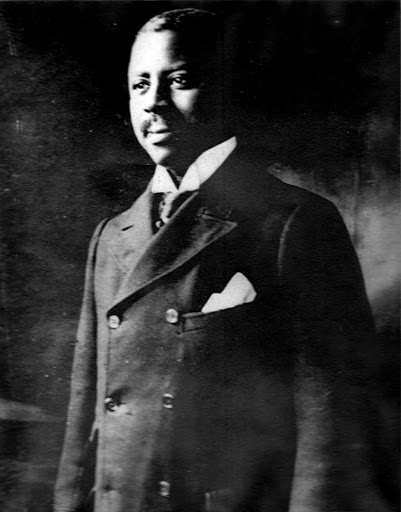
Robert Chaittle Turner, the first African American Baha’i, certainly knew something about invisibility.
Born into slavery in 1856 in rural Virginia, he spent his first nine years within the dehumanizing world of the plantation economy and the remainder of his life, following the Civil War, as a domestic servant, a position that traditionally required discretion and extreme deference especially if you were Black. Despite the ignoble circumstances of his birth and his precarious social standing, he embraced the Baha’i Faith and its teachings of human oneness in 1898 – learning about it in the home of his employer, Mrs. Phoebe Hearst – and joined the first group of Western pilgrims that same year on a trip to the Holy Land to meet Abdul-Baha, the appointed successor of the Faith and the perfect exemplar of the Baha’i teachings.
It was Robert Turner’s audience with Abdu’l-Baha, who effusively welcomed him with deep love and affection, that served as a catalyst for a transformation in his spirit. Turner would later write that “Never again will I allow the world to kick dust in my face.”
Abdu’l-Baha saw the quality of Mr. Turner’s inmost character, not his disempowered social position. On Turner’s passing, Abdu’l-Baha proclaimed:
Gracious God! What a shining candle was lighted within that black-coloured lamp. Praise be to God that this candle ascended from its earthly lamp unto the immortal Kingdom, to gleam and shine in the assemblage of heaven.
This tension between the objective and the subjective reality – between what we see and what we do not, what preoccupies our attention and what gets overlooked as invisible – lodged at the forefront of my initial reflections when I was asked to serve as the lead designer for the Robert Turner Monument at Cypress Lawn Cemetery near San Francisco in 2020.
Working with a diverse cohort of eight gifted collaborators whose talents and respective fields of service included education, construction, writing and history, fiscal management, design, website development and others, I began the deeply challenging process of trying to render in sculptural form some essential truths about the animating spirit of Robert Turner.
Adding to the magnitude of this task was the historic nature of the endeavor – the first time in Baha’i history that a project of this significance would be designed by a person of African descent, an affirmation that representation matters particularly for a Faith whose pre-eminent teaching is the oneness of humankind and the elimination of all forms of prejudice. In a symbolic sense, my involvement came in response to the towering example set by Abdu’l-Baha, who in every social interaction where race was a factor did not hesitate to ask the enduring question, “Who is missing at the table?”
RELATED: Robert Turner, Slave by Birth, Freed by Lincoln, Enlightened by Faith
He didn’t just ask the question – Abdu’l-Baha responded by proactively centering those who historically had been locked out of spaces deemed exclusive and exclusionary. For Abdu’l-Baha, social query represented an insufficient tool to redress past wrongs. He grasped the attention of society through the arresting authority of his words – and by his actions he transformed it through his unapologetic determination to recast the social order in the radically inclusive image of Baha’u’llah’s teachings.
With this salient point in mind, I realized that although Mr. Turner’s ethnicity represented a secondary identity in relation to his primary spiritual identity, his race nevertheless formed a critical consideration in the final design. Typically, in the Baha’i Faith, the likeness of a person is not often included in memorial designs. Instead, the focus is directed towards the spiritual qualities of the deceased, and not the physical frame in which that spirit dwelled. I understood the wisdom of this, but I also knew in light of my own experience all those years ago in my Bible school class, that representation mattered.
In order for me to dream of the possibility of oneness I must first be able to see the possibility in blackness and ultimately come to believe without question that in this faith a little Black boy earnestly searching for himself in a Bible picture book knows that he has a seat at the table. Quite frankly, that was also a message the larger society needed to grasp. Too often, in our quest to move beyond the wrongs of the past, we jump over the critical steps necessary to seed lasting transformation. In so doing, we can underestimate the powerful influence of legacy, and unconsciously default to marginalizing practices where we unintentionally emphasize the contributions of some as we diminish the contributions of others.
For me then, Mr. Turner’s likeness, and his station as the first African American Baha’i, could serve as a touchstone of inspiration for the Black community specifically and a reminder to us all that even those who were forced to dwell within the basement of America’s perverse social order could be elevated based on the quality of their character and the scintillating spark of their spirit. In his loving embrace and public affirmation of Robert Turner, Abdu’l-Baha demonstrated the true meaning of the traditional West African greeting “I see you.”
RELATED: Why Justice Is Needed in the Prison System
As I pored over historical documents and engaged in illuminating conversations with historians about the life of Mr. Turner, all in an attempt to equip myself with the information that would be an indispensable part of the design process, I began to think of the forms and materials that would best serve his monument’s thematic focus. I knew that I wanted to use humble materials imbued with a subtle, arresting power. I also had to consider the weather, which in the northern California climate, could be equal parts fog, rain, and intense sunlight. Bronze and stone were the logical choices because of their permanence, durability, and timeless beauty. The forms developed quite quickly, derived in part from a moving quote attributed to Abdu’l-Baha, who reassured Mr. Turner that “if he stayed faithful to His cause” he would “be the door through which a whole race would enter the Kingdom.”
The concept of the door as a portal of transition, transformation, and transcendence became an arresting metaphor for the life of Mr. Turner who, given his life’s work, must have opened and closed many doors for the guests of his employers. Abdu’l-Baha, whose name means “servant of God,” centers the station of servitude exemplified in the life of Robert Turner, as the gateway to the Divine. Through his singular distinction as “the first,” Mr. Turner ushered his beleaguered community, accustomed to entering through the back door, through the front door of the Kingdom.
To represent this poignant idea, we used a locally sourced rough-cut stone superstructure weighing several thousand pounds as the dominant element for the memorial. For me, the unrefined surface with its dense, compressed energy alluded to the humility, strength, and durability of Mr. Turner’s character. At the center of the thick stone, a large circle approximately 36 inches in diameter was cut through, leaving an unobstructed view across the cemetery lawn dotted with grave markers. In the lower left corner of the body of the stone, the above quote attributed to Abdu’l-Baha has been carved into the surface. To the right of the opening, a bronze disk affixed to the superstructure and matching the diameter of the cut circle suggests a door which has been opened to reveal a passageway to an unnamed beyond. A bas-relief sculpture of the likeness of Robert Turner dominates the outward-facing surface of the door, along with the dates of his birth and his passage to the next world.
The elliptical bronze burial marker over Mr. Turner’s resting place derives its inspiration from several sources. On one hand, it resembles the abstracted form of the hull of a boat, suggesting the journey of the slave trade. It also suggests a distended womb, as though the life of Mr. Turner represented an expectant future for the African American community, and finally, it indirectly points to the tapered anatomy of a fish, which has particular resonance in Christianity as the disciple and fisherman Peter is told by Jesus to “Follow Me and I will make you fishers of men.”
On the surface of the burial marker, the quotation from Abdu’l-Baha printed at the beginning of this article is wedged between the nine pointed Baha’i star at the apex and the west African sankofa symbol at the bottom, which means that in order to know where we are going we must know where we have been.
The path to completing Robert Turner’s Memorial was beset with challenges and difficulties. There were delays in fabrication and installation. Occasionally, there were passionate disagreements between members of the task force, but as the work drew to a close I was reminded that the chemistry of all forward progress is composed of both crisis and victory. The obstacles encountered along the way always test our resolve to complete a task. Struggle, then, is an inescapable part of the process that ultimately has the capacity to draw out latent virtues within ourselves such as patience, forgiveness, fortitude, and faith. It is in the end when the work is complete, after we have dressed our wounds, and comforted our bruised egos, that we appreciate the journey and its results. In that moment we feel an abiding gratitude for having had the opportunity to serve something greater than ourselves, and in the spirit of the great gospel singer Mahalia Jackson, “we can look back and wonder how we got over.”
If you’d like to visit Robert Turner’s memorial either virtually or in person, please go to www.RobertTurner.org, where you’ll find a wealth of material on this wonderful Disciple of Abdu’l-Baha and his remarkable – and now highly visible – earthly life.
Robert Chaittle Turner passed away on June 15, 1909, 114 years ago today. This weekend, at 10:30 am on Saturday, June 17, The Oakland Baha’i Community will host a memorial gathering at his gravesite to recognize and commemorate his life. All are welcome. For directions, please see www.RobertTurner.org. Also, to offer youth the opportunity to learn more about Mr. Turner’s life in a group symposium or by independent study, take the action-based “Open Door” challenge: https://www.robertturneropendoor.com/open-door-challenge-what-why


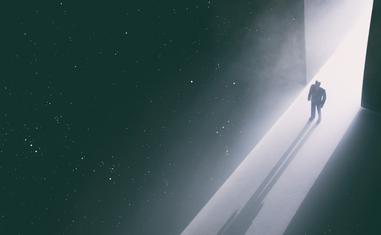

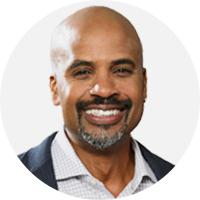
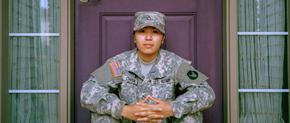
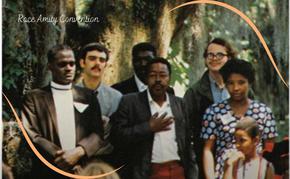
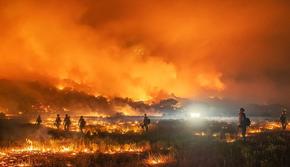









Comments
Sign in or create an account
Continue with Facebookor